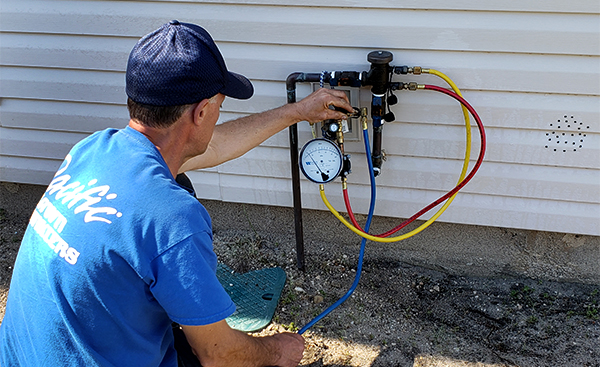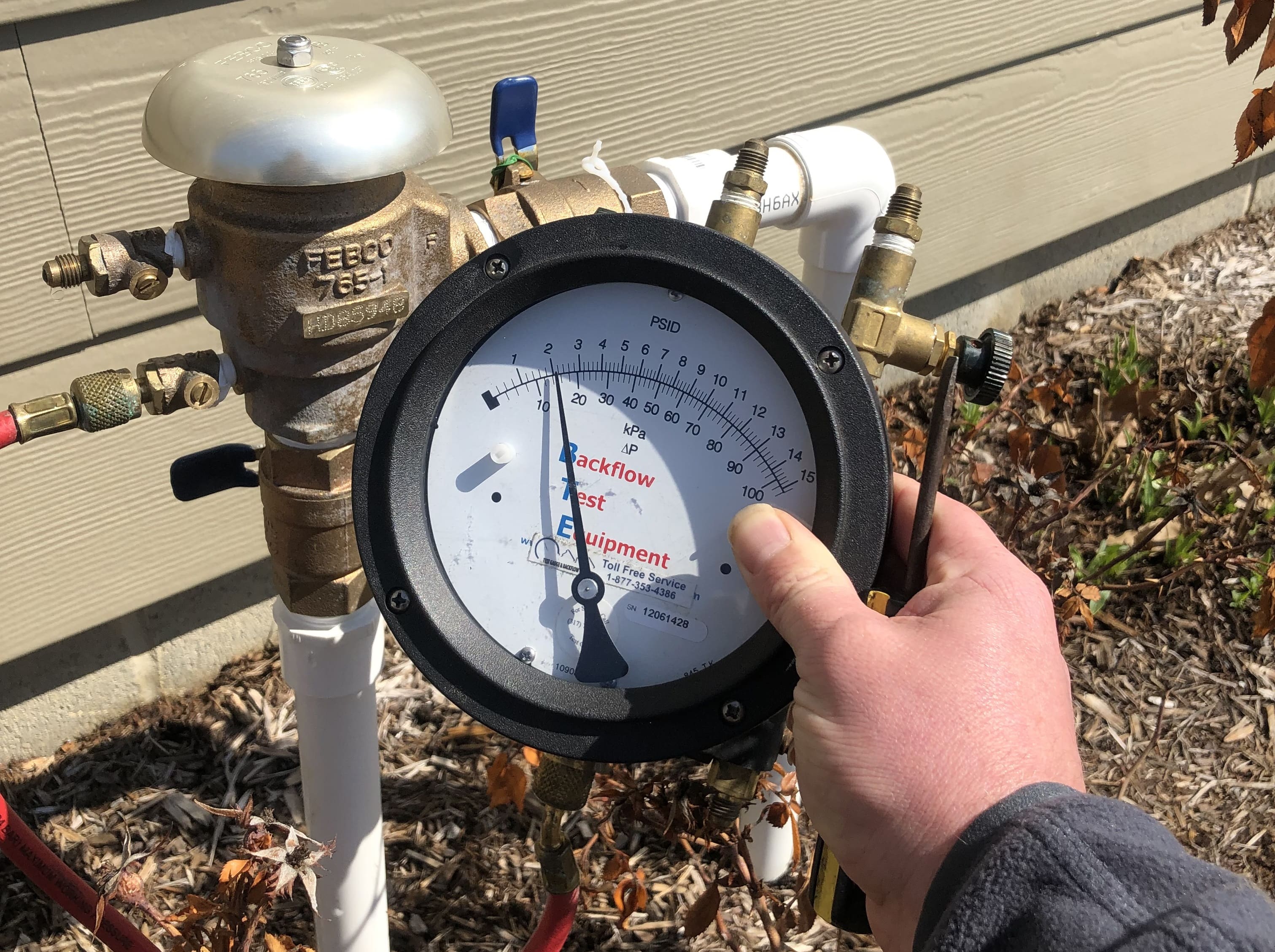Must I Execute a Backflow Test on My Water System?
Must I Execute a Backflow Test on My Water System?
Blog Article
Were you trying to locate answers concerning Backflow Assembly Testing?

Yes, you need to backflow test your residence's water system to guarantee that the water is without contaminants as well as harmful levels of chemicals. Due to the tools required and also space for error, you ought to not try to perform heartburn screening on your own. We advise that you call a specialist plumber every number of years to evaluate your water.
What is Heartburn?
Simply put, backflow is when water moves upwards-- the opposite instructions in the plumbing system. This is also referred to as "backpressure." When the water relocates this direction, it can mix with damaging contaminants and posture a danger.
What Triggers Heartburn?
A typical reason of heartburn is a loss of water pressure that causes the water to siphon back into the water supply. After some time, there is a loss in water stress and also the tube starts to suck the water back right into the water supply. As you can picture, there are now chemicals from the paint that are entering the water supply, possibly posing a risk.
Backflow Testing is Required by Regulation in Specific Cities
Depending on where you live, you might actually be required by regulation to backflow test your legislation. Iowa City maintains a record of all buildings offered by the city's water supply.
You Can Avoid Heartburn
The main objective of a heartburn device is to protect against water from streaming in reverse right into your water supply. Plumbing professionals install the tool on the pipelines in your house to make certain that the water only flows in the appropriate direction.
Backflow Can Effect Both You as well as Your City
Numerous cities develop backflow standards because hazardous backflow can affect the public water system in addition to a single building. Contemporary cities have backflow tools in place that secure the water supply that comes from most residences and commercial buildings. The actual threat comes from irrigation systems, which can damage the water supply with poisonous fertilizers, manure, as well as other chemicals.
Call a Plumber to Check for Backflow Before It is Far too late
A plumbing company can swiftly evaluate your residence's water to establish if there are any type of unsafe chemical levels. And if you do uncover that your water has high levels of toxins, a plumber can conveniently mount a heartburn avoidance tool.
Yes, you need to backflow test your home's water supply to ensure that the water is totally free of contaminants and also damaging levels of chemicals. A regular reason of heartburn is a loss of water pressure that causes the water to siphon back into the water supply. After some time, there is a loss in water stress and also the tube starts to draw the water back right into the water supply. The major objective of a backflow device is to protect against water from flowing backward right into your water supply. Lots of cities develop heartburn guidelines because hazardous backflow can influence the public water supply in addition to a single structure.
WHY DOES BACKFLOW TESTING NEED TO BE DONE EVERY YEAR
What Is Backflow?
Toxic gas backing up into a building is one example of potential backflow issues, but backflow can occur in many other ways.
Backflow is generally referred to as the reversal of a liquid or gas in a plumbing system.
Most issues for the public occur with backflow resulting in contaminated drinking water. If you look up backflow issues online you’ll probably find references to “potable” water. That means drinking water.
There have been backflow issues in the past with drinking water. Chemicals, sewage and other contaminants have found their way into drinking water causing health issues for those that count on the fresh water.
What Causes Backflow?
In a residence or commercial building water generally flows one way. This normal flow is usually driven by consistent pressure in the water and waste system.
Anything that changes the normal pressure in the system can lead to backflow.
Fire hydrant use or malfunction can reverse the normal pressure in the system on a city line, but backflow can occur in a number of different ways.
Sometimes backpressure might be caused by someone using a garden hose and submerging the end of the hose in a pool of liquid. If pressure is lost the flow could reverse and contaminants could be released into the drinking water.
Anytime there is a connection between contaminants and the drinking water there is potential for a backflow issue. Sometimes these connections are not immediately obvious like the garden hose connecting to a building’s drinking water supply.
Backflow Regulations
The Environmental Protection Agency (EPA) provides guidelines and regulations for state and local governments regarding backflow. State and local governments also have their own guidelines and regulations for backflow prevention.
Arizona has its own backflow regulations.
Due to issues with backflow in the past, regulations require backflow preventer devices to be used in nearly all residential and commercial buildings.
A backflow preventer is a device that prevents backflow as cross-connection points where potential backflow issues may occur.
While backflow is not a common occurrence, preventers are in place to make sure there is no contamination should something malfunction or go wrong with a building’s water supply.

As an enthusiastic person who reads on Backflow Testing, I imagined sharing that excerpt was important. Do you know somebody who is interested by the topic? Do not hesitate to promote it. We enjoy reading our article about Commercial Backflow Testing.
Phone
Report this page